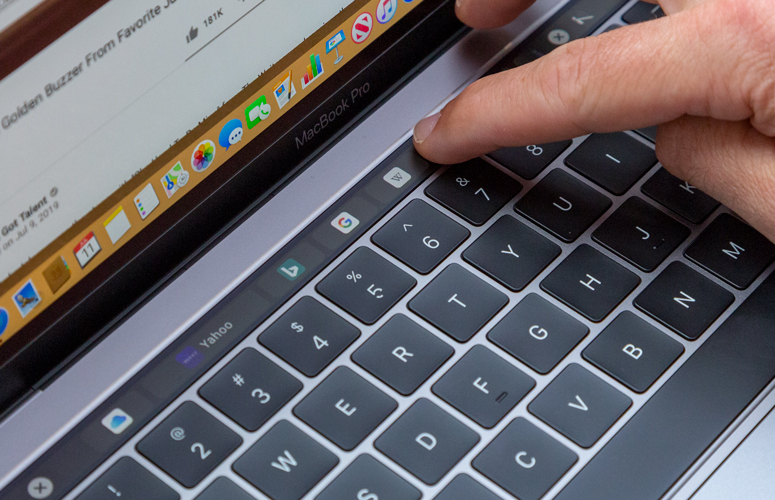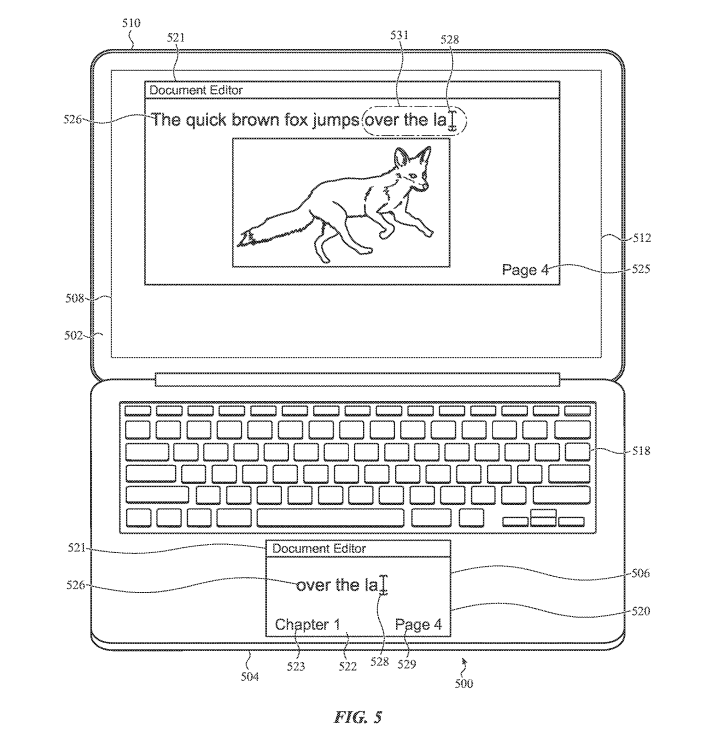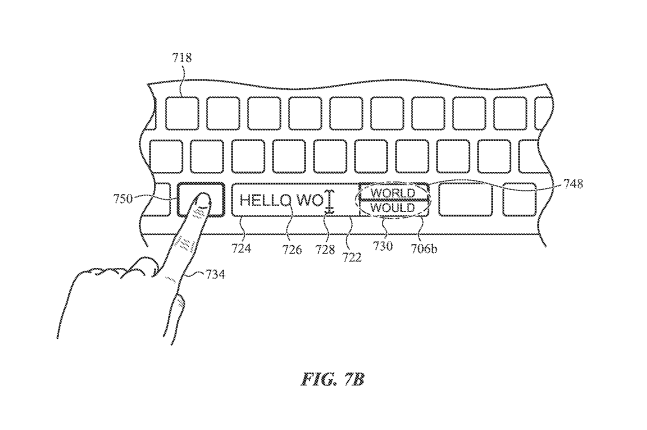MacBook Pro Touch Bar could move to the spacebar — and we're confused
This is just bizarre, even for Apple

Apple might steal a page from Asus' book by turning the MacBook's touchpad into a secondary display.
A patent (via Patently Apple) titled "Auxiliary text integrated into a keyboard" describes a device with a secondary display embedded in the lower portion of the keyboard — on either the touchpad or spacebar. The panel would provide contextual information based on the application running on the main screen or accessories connected to the laptop.
- MacBook Pro 2020 to feature 14.1-inch display with futuristic tech (report)
- Apple 2020 iPad Pro rumor roundup: Everything you need to know
- Apple's first foldable could take a page from Microsoft's playbook
Sound familiar? That's because what is described in the patent is very similar to the MacBook Pro's Touch Bar, an OLED strip that runs along the length of the deck where shortcut keys are usually positioned. That divisive feature adapts based on what you're doing.
For example, when you're composing an email, the Touch Bar transforms into an editing tool that lets you change font, add emojis, or select autocorrect suggestions. Now Apple wants to take things to the next level.

"[Few] advances have been made in recent years to improve typing efficiency for users operating desktop and laptop computers," the patent reads. "Therefore, an improved keyboard design is needed in order to increase efficiency and improve the user experience when typing on desktop and laptop computers."
Apple included drawings of how the secondary screen could interact with the main panel on a MacBook, iPad or an iMac with a wireless keyboard. One visual explicitly shows the trackpad as a replacement to the Touch Bar. Subsequent images show how you can use the touchpad screen to zoom in on text, navigate between multiple windows, choose predicted words as you're typing, and even edit a document.
Asus already rolled out a similar feature across its ZenBook and VivoBook laptops. Called ScreenPad 2.0, the touchpad moonlights as a secondary 5.65-inch, 2160 x 1080-pixel touch screen. It lets you launch apps, extend the main display or control tools directly from the touchpad.
Stay in the know with Laptop Mag
Get our in-depth reviews, helpful tips, great deals, and the biggest news stories delivered to your inbox.
Even the spacebar gets a screen
The most interesting implementation of Apple's secondary screen places it on the spacebar instead of the trackpad. Autocorrect words would be displayed on the spacebar where you would tap them to select. Apple explained that this bizarre concept could help typists who struggle to "maintain visual focus" on the keys and screen as they type.

"To view both the keys being pressed and the results of the typing presented on the display, a user may be forced to repeatedly shift his or her field of view between the keyboard and the main display or monitor," the patent reads." This continual shifting may slow down or interrupt typing activity, which may limit or reduce the user's productivity and/or the efficiency of typing operations."
Before you get too excited (or distraught), this is one of many patents Apple files each year, and one of 42 granted earlier this week. Few of those will ever see the light of day, so don't expect the MacBook Pro 2020 to have an OLED screen on the spacebar or touchpad.
While we're on the subject of strange Apple patents, the company is also considering its first foldable device. Things are getting weird over in Cupertino, and we're all for it.
Phillip Tracy is the assistant managing editor at Laptop Mag where he reviews laptops, phones and other gadgets while covering the latest industry news. After graduating with a journalism degree from the University of Texas at Austin, Phillip became a tech reporter at the Daily Dot. There, he wrote reviews for a range of gadgets and covered everything from social media trends to cybersecurity. Prior to that, he wrote for RCR Wireless News covering 5G and IoT. When he's not tinkering with devices, you can find Phillip playing video games, reading, traveling or watching soccer.

